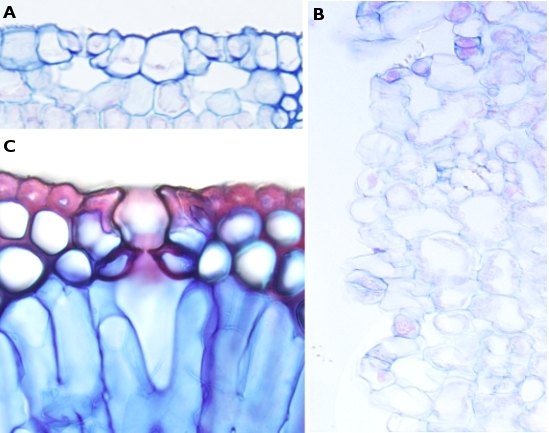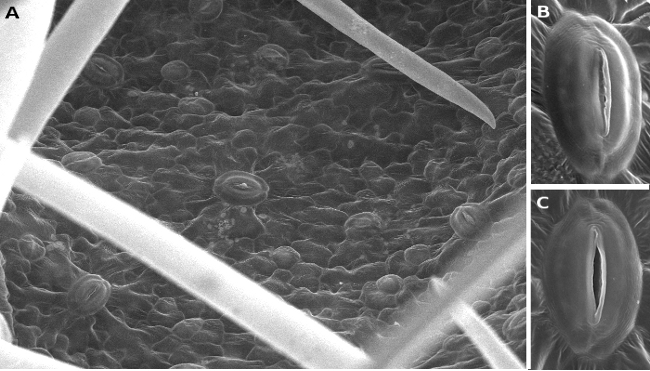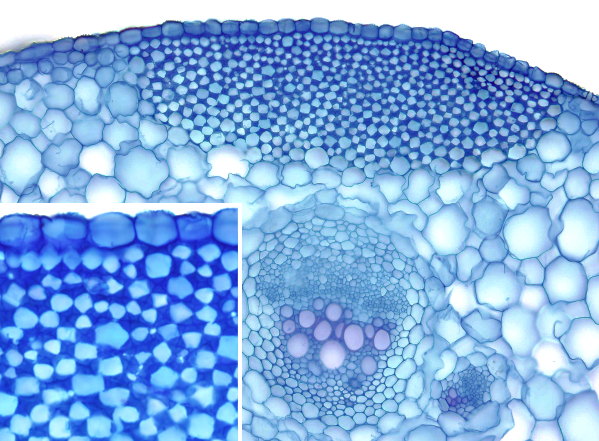Plant tissues. Protection.
STOMA

Species: ( )
Technique: paraffin embedding, section stained with Alcian blue / safranin.
B) Organ: leaf, stoma.
Species: kiwi (Actinidia deliciosa).
Technique: paraffin embedding, section stained with Alcian blue / safranin.
C) Organ: leaf, stoma.
Species: pine (Pinus spp.).
Technique: vibratome section stained with Alcian blue / safranin.
Stomata are present in the aerial parts of the plants. They regulate gas and water exchange with the atmosphere. Stomata are composed of guard cells and a substomatal chamber, located under the guard cells. Stomata are scattered among epidermal cells, mostly at the same level as epidermal cells (image A), but they may also protrude (image B) or be somewhat sunken (image C). In the latter case, they can even be found in invaginations of the epidermis called stomatal crypts. Commonly, the guard cells are surrounded by a variable number of attached cells called subsidiary or companion cells. Guard and subsidiary cells are differentiated from epidermal cells by their morphology and size, as well as by the uneven thickening of their cell walls. Guard cells of the same stoma may be more or less separated, allowing an opening between them, known as pore or ostiole, which communicates the external environment with the substomatal chamber, and then with the internal tissues of the plant. Guard cells, subsidiary cells and substomatic chamber form the stomatal complex.

Atlas of plant and animal histology
Plant tissues. Collenchyma.
ANGULAR

Species: ivy (Hedera helix).
Technique: paraffin embedding, section stained with methylene blue.
In the angular collenchyma, the cell wall thickenings occur at the angles of the cell surface where several cells converge, hence the absence of intercellular spaces in this tissue. The thickenings are like pillars arranged longitudinally in the plant body, providing great mechanical resistance.
